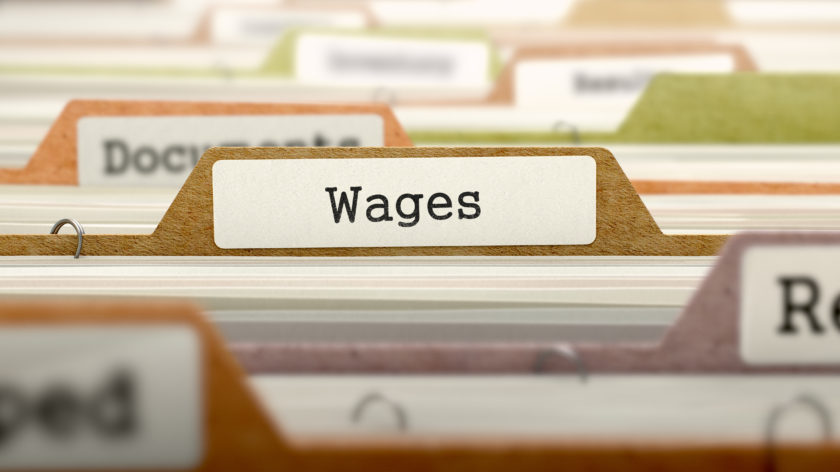Earlier this week the Federal Government announced the third round of its economic stimulus measures in response to the impact of COVID-19. This represents a game changer for business, employment and social incomes. The ‘JobKeeper Payment’ is modelled in similar fashion to the NZ initiative which was widely acclaimed. It encourages the continued employment of millions of Australians who could otherwise be laid off and lose the employment connection. That connection is considered vital both to individual welfare and to a swift uptake when the economy starts to recover. It has been disappointing to see so many people forced into the Centrelink welfare administration system over the past few weeks. Hopefully that can be circumvented for many as we have a very effective distribution system in our employment processes.
Under the JobKeeper Payment, businesses significantly impacted by the Coronavirus will be able to access a subsidy from the Government to continue paying their employees. Affected employers will be able to claim a fortnightly payment of $1,500 per eligible employee from 30 March 2020, for a maximum period of 6 months.
Fact sheets for employers and employees can be accessed on the Treasury website, however we have summarised the information that has been released below:
Eligibility
We anticipate the majority of our clients will be eligible if their turnover (revenue tbc.) has been reduced by more than 30% relative to a comparable period a year ago.
Eligible employees are employees who:
- are currently employed (including those stood down or re-hired), were employed at 1 March 2020, are full-time, part-time or long-term casuals (defined as employed on a regular basis for longer than 12 months as at 1 March 2020);
- Australian citizens, or the holder of an approved category of Visa;
- are at least 16 years of age;
As many businesses have already taken action with respect to redundancies and terminations. Employees can be re-hired and be eligible for the payment should they meet the above criteria.
Should you need assistance determining the eligibility of your business or specific employees, please do not hesitate to contact us.
Sole traders and the self-employed can also access the JobKeeper Payment, and will have to provide monthly reporting to the ATO to verify their continuing eligibility.
Application Process
Eligible business are to register with the ATO and declare that they have or will experience the required turnover decline. Further specifics about the application process will then be communicated directly by the ATO. As this communication is being sent, the application details are not available. We are standing by to assist but urge relevant clients to undertake the registration step or ask us to do so on their behalf.
Businesses will be required to identify eligible employees and notify the ATO. The ATO intends to pre-populate much of this reporting through the Single Touch Payroll (STP) system that is now mandatory for most employers.
Payments
Participating employers will be required to ensure eligible employees will receive, at a minimum, $1,500 per fortnight, before tax. If an employee does not work as they have been stood down, or earns less than the $1,500 due to the amount of work they have done in the fortnight, the employer is still required to pay the full $1,500 to the employee. Employees that remain working and earning more than $1,500 will not receive any additional payment as a result of the subsidy, it will be retained by the employer and used to offset the cost of their employment.
It will be up to the employer if they want to pay superannuation on any additional wage paid because of the JobKeeper Payment. The Superannuation Guarantee will continue to be required to be paid on an employee’s ordinary time earnings.
The payments will be made to employers from the 1st of May, but backdated to the 30th of March. Eligible businesses can begin paying the subsidy effectively immediately. We note that this delay may present cash flow difficulties for businesses in the current environment, again please do not hesitate to contact us should you wish to discuss your situation and the options available.
Details are Incomplete at this Stage
We expect further detail to emerge over the coming days as the legislation for the package is finalised. We expect and will pursue further clarification around:
- The eligibility of new businesses that do not have a comparable prior-year period with which to demonstrate loss of revenue or where the stipulated period is unrepresentative.
- The eligibility of businesses that are able to demonstrate their being impacted through metrics other than revenue.
- Whether there will be any subsidies for the non-resident workforce.
- The exact definition of ‘regular basis’ with respect to casual employees.
- Whether employees receiving only the JobKeeper Payment are considered ‘employed’ for the purposes of annual, long service and sick leave entitlements.
- The impact of re-hiring retrenched employees on continuity of service entitlements such as long service leave.
- The process by which self-employed or those owners who are paid via dividends or Trust/Partnership distributions in lieu of wages can quantify their claim.
- Specifics about the application and on-going reporting process.
Morrows welcomes this announcement. Given the sheer scale of the pandemic’s economic impact, a direct subsidy of employee wages has become the only way that many businesses are going to be able to retain their staff. Keeping businesses productive and maintaining connections to their employees and clients over the coming months will be vital in allowing us all to emerge intact after these challenging times.
As always, please do not hesitate to contact Morrows BizTax or Human Resources should you have any questions about the above or would like assistance and guidance.





